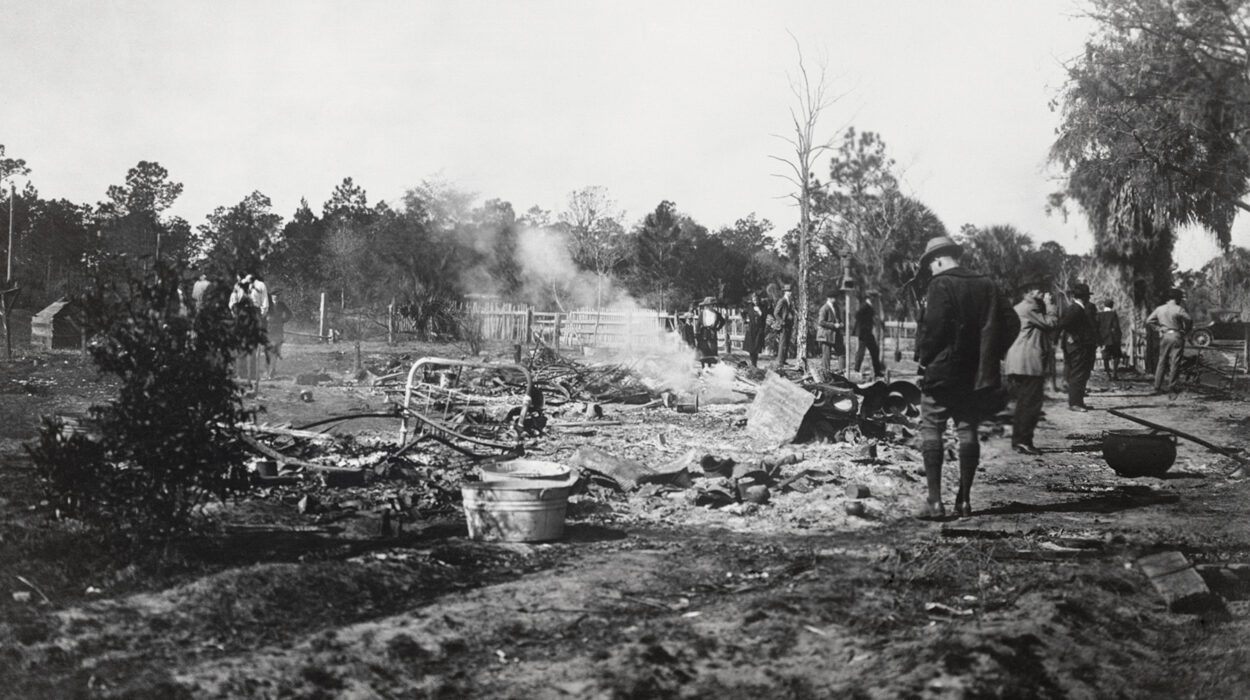On January 1, 1923, Rosewood, Florida, was a thriving town of mostly African American residents. Seven days later, it was gone, burned to the ground by a white mob.
By: Edward González-Tennant January 1, 2023
New Year’s Day 2023 marks the 100th anniversary of the Rosewood Massacre, when violence broke out in the prosperous, mostly African American town of Rosewood, Florida, after a Black man was falsely accused of assault by a white woman in the neighboring community of Sumner. Over the course of the next seven days, at least eight people would be killed and every Black-owned building burned to the ground. Rosewood’s African American population would never return following this forced displacement.
The destruction of Rosewood wasn’t an isolated event. It occurred in the years following World War I, when anti-Black violence became disturbingly common following a renewed push by African Americans for equality after helping to fight fascism during the war. This and similar events were a continuation of a tradition of lynching Black Americans in the nineteenth and twentieth centuries, as detailed by Amy Kate Bailey and Stewart E. Tolnay in their 2015 book, Lynched: The Victims of Southern Mob Violence. In addition, hundreds of communities were subjected to full-scale assault by white supremacist mobs. While these incidents were historically referred to as “race riots,” the term “massacres” is considered most apt today.
So unfamiliar is this history that when white Americans are confronted with portrayals of it in the media and popular entertainment, they must check if such events actually occurred. (This recently happened when HBO’s Watchmen premiered in 2019 and opened with scenes of the Tulsa Massacre.) While much of the violence concentrated in the nation’s urban centers is becoming better researched and documented, unearthing these histories in rural locations like Rosewood is equally important and faces unique challenges. Examining these events corrects the erasure of Black history, itself a form of white supremacy. Moreover, scholarship of lynchings and race massacres in both urban and rural settings also holds important lessons for understanding modern America.
What Happened in Rosewood, Florida?
New Year’s Day 1923 on the Gulf Coast of Florida was partly cloudy. Fifty-one-year-old Sarah Carrier and her granddaughter Philomena walked familiar paths as they traveled between Carrier’s home in Rosewood and the Taylor residence in neighboring Sumner. Sumner, a mostly white company town, was operated by members of the Cummer family, who were based across the state in Jacksonville. Cool breezes blew through nearby swamps as Sarah and Philomena washed and hung laundry for the Taylors. At one point, the pair witnessed a white man they didn’t recognize leave the Taylor house. An hour or so later, a visibly shaken Fannie Taylor emerged as well. As white residents of Sumner gathered, Taylor chose a common lie, claiming she’d been attacked by an unnamed Black assailant. Taylor and others couldn’t imagine the horrors this choice would unleash over the coming days.
This article appears in its entirety at the JSTOR Daily website. It can be read here.
